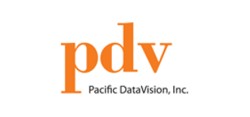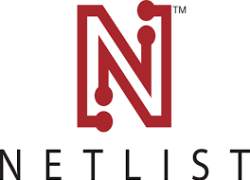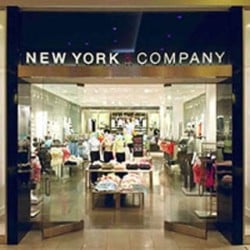One of our favorite events at Fool HQ is FoolFest, when our members get the chance to gather together and learn about investing face to face with their favorite Foolish folk. And Motley Fool Answers co-hosts Alison Southwick and Robert Brokamp think you'd all enjoy it, too. That's why, for this podcast, they're skipping their usual witty banter -- heck, Bro didn't even show up in the studio -- and instead sharing one of the conference's highlights: Chris Hill's interview with the fraternal fellows who founded the Fool in the first place, Tom and David Gardner.
In this segment, Hill asks David about which technologies and trends he sees as game changers in the next couple of decades, and asks for 10 more stocks he's recommending for Foolish investors. But perhaps more important than the picks and the trends is the tip he has about how to invest.
A full transcript follows the video.
This video was recorded on July 24, 2018.
Chris Hill: "What new technologies, innovations, and trends are you most excited about moving forward?"
David Gardner: There's no question that artificial intelligence is going to be like Wi-Fi in 20 years. As Kevin Kelly was saying in San Francisco, 20 years ago not a lot of us knew what Wi-Fi was, and these days it's this invisible thing [this layer around all of us] that we hope is there and that we want to perform well for us and that's made our lives better.
AI is going to be like Wi-Fi in 20 years. There's going to be AI all around us. It's going to be in our phones or whatever we're using as phones at that point. It's going to be in the apps that we're using. It's going to be in tangible things around us as we walk past things. In the same way that we're hitting more three-pointers as NBA players these days than we were 20 years ago, we're all going to be a little smarter and better served, and the world will be more personalized and customized for us.
AI is huge, and that's a big part of NVIDIA's story that I wasn't counting on when we first picked it as a graphical processing gaming company in 2005. I love companies that evolve and morph -- technologies that do the same as genomics. Obviously Editas�(NASDAQ:EDIT)�and CRISPR technology. These are really important things.
The other thing I just want to make really clear is No. 1, we all have to be willing to lose and be wrong. What I just said about AI might look silly in 20 years. I don't know if anybody will want to see the Fool Fest video in 2038 of what we did today.
But we could be wrong, so you need to always be willing to be wrong. There's not a stock that I own personally [and I hope this is true of you, as well], that if it went to zero would devastate me financially. It would hurt a lot, because I have some seriously overweighted positions, but if any one of those companies went to zero, that would be still OK. It wouldn't change my life grandly.
I hope you're not on margin. I hope you're not loading it up on one stock or anything like that. I don't want you to do that, because we can be wrong. That's a big part of being a Rule Breaker and thinking about the future is always being willing to be wrong.
__
Gardner: All 10 of these are companies that are not presently, I don't think, featured in any other Motley Fool services. We just picked them, once or more, in Stock Advisor or Rule Breakers. I think I emailed you this list last night.
Hill: You did.
Gardner: So I need to go back to my email and get it. Let's go alphabetically. And yes, this is time to take notes because we don't have a graphic for this one. I'm just going to go through these 10 companies quickly and alphabetically. Some of them you'll recognize, I hope.
The first one is Adobe�(NASDAQ:ADBE). The ticker symbol is [ADBE]. The company is a worldwide leader for artists and graphical designers creating all kinds of great stuff largely in an online world which benefits from Adobe Graphics. Adobe Acrobat. Everybody knows Adobe. Of the 10 companies, this is the largest company. Its market cap is $119 billion as of yesterday.
I think it's been an outstanding stock in the past. I think it will remain one. They moved from a subscription-based software product -- people got annoyed by having to upgrade and rebuy each year in that old model that we remember from the nineties -- and they went to a cloud-based, subscription-based product. And they kept their worldwide leadership doing that, which is a hard trick to pull, and they've done it really well.
The next one is Dassault Syst猫mes (NASDAQOTH:DASTY). The company's ticker symbol is [DASTY]. This is the second-biggest company on the list. Alphabetically it's also second. Dassault Syst猫mes is a French company. There aren't a lot of great French stocks, in my experience. That's why I like to highlight Dassault as an example in a relatively socialist country of a really fine capitalistic entity that's created a lot of value.
And in particular, it's their CAD/ CAM software. It's their computer-aided design software. And in a world where we're moving not from lots and lots of graphics just on the internet, but toward virtual reality where there will be even more graphical components to our online experiences, I really like Dassault Syst猫mes.
Third and fourth are both "E" companies. The first is Editas Medicine. The ticker symbol is [EDIT]. It's the company that is behind the CRISPR technology. There are a few other players out there in the world. It's a fascinating technology. We don't have time to talk about it right now. Some of you already know it, and if you don't know it you should google it and understand gene editing and how it might change your life and mine and the world at large.
I hope we'll make good use of it. Like any powerful technology, it can be used for good or for ill. The internet is used largely for good, but often for ill. That can also be true of gene editing. But there's no question that this will be a net gain and will save many lives and improve the world at large. I really like Editas, but it's an early stage company. It's only a $2 billion market cap. It's the smallest of these 10 and so it is a company that you realize could vanish overnight if things change one way or another.
Then the fourth company is Etsy�(NASDAQ:ETSY). I think a lot of us know Etsy. [ETSY] is, of course, the ticker symbol. You can go to Etsy.com and buy somebody's handicrafts. There's a wonderful community of makers and then buyers. It's a tough thing to compete with, even in an Amazon-led world, and it's been a good performer. It's a $4 billion company over at Motley Fool Rule Breakers.
Next let's go to two companies, companies five and six, both of which have two-letter ticker symbols starting with the letter "I." The first one is [IQ], and that's iQiyi�(NASDAQ:IQ). And that's one of my most recent picks. That's in Motley Fool Rule Breakers. That's the Netflix of China. It's starting from a $7 billion market cap and there's never any pure analog.
Baidu is not actually the Google of China, but they're clear enough or fair enough that you can make these comparisons. If you like Netflix and you believe in that business model, you realize it's really hard if you're Netflix to get into China. China has a firewall up against a lot of incursions of big-time American players. Baidu's been the beneficiary of that. Google hasn't been able to get into China so well, so we've owned Baidu stock. It's done really well for us. I think iQiyi is maybe another example. That we'll see.
And then the other "I" is IT. And Gartner�(NYSE:IT)-- which I think a lot of us know -- is the tech consulting company. Today it's worth about $12 billion with its Magic Quadrants, if you know that, or the hype cycle, which I've talked about on my Rule Breaker Investing podcast. They're the company behind that. And what I like about Gartner is that in a world in which there's so much complexity and oncoming technology and development all the time, you can see the benefits of being the person, the company that explains to people that might want to use these technologies how the world's changing. With more and more tech coming online I like Gartner a lot.
And then my last four are an "L," an "M," a "P," and a "T." The "L" is Live Nation (NYSE:LYV)�[LYV]. Live Nation is a company that -- I think a lot of us know this -- in a world where lots of rock stars these days make their money off of their tours [not off of their album sales], Live Nation not only owns the venues where a lot of rock concerts happen and partner with and own some of the artists in those venues, but it bought Ticketmaster, so now it also sells you the tickets to go to the venues that it owns to watch the acts that it's partnered with. I really like Live Nation. I think it's a really strong competitive advantage and a tough one to compete with.
Similarly Match Group (NASDAQ:MTCH) [MTCH], which is the eighth stock and the "M" stock. I think a lot of us know Match.com, Tinder, etc. It took a little bit of a spill about a month ago or so [you guys talked about it on Market Foolery] because Facebook said, "Hey, we might want to start doing dating. We have a lot of data and [one way you might meet people is through] Facebook." And maybe you don't need Match.com, or Tinder, or the 40 or so other dating sites that Match Group owns, but I still really like Match Group's focus in this area. Their leadership. And the stock has almost bounced all the way back from that spill that it took. Match Group.
And then the last two. Palo Alto Networks�(NYSE:PANW) [PANW]. This is a company that's behind firewall security that offers that for a lot of its partners. Our wonderful team in the previous hour talked about the importance of security and companies like Okta. Palo Alto is in this world.
And I like it relative to a couple of my loser picks in computer security. I took a shine to a few companies like FireEye and Fortinet [which actually has worked out pretty well]. But I took a shine to these companies because I believe that obviously cybersecurity is going to be around for the rest of our lives. For the rest of our race. I really like a business that is going to be that constant. However, those companies were smaller caps, and Palo Alto Networks tipping the scales at a market cap of $19 billion is a more substantial, bigger player that I think is in a better position than some of the smaller fry.
The very last one is Teladoc (NYSE:TDOC)[TDOC] which I know you've talked a lot about on Market Foolery and Motley Fool Money, and I know Jason Moser has been a fan of Teladoc. I am, too. It's a pick in Rule Breakers. [We offer a lot of benefits to our employees, and those employees don't always have time to wait in line at the doctor's]. Just to pick up a phone and talk about something. Start a relationship with somebody who's part of your corporate benefits if you're employed and it's part of your health approach, your health strategy. I think that's a good business.
It's still small. It's a small company. Teladoc is the second smallest on the list at $3 billion. A lot of people have Teladoc but don't use it. It's a tiny percentage of people who actually use this service, but it strikes me as something that will only be increasingly relevant in the future. There we go. There's my next 10.
 Xylem Inc (NYSE:XYL) has been assigned an average recommendation of “Buy” from the twelve brokerages that are presently covering the firm, Marketbeat Ratings reports. One research analyst has rated the stock with a sell recommendation, four have assigned a hold recommendation and seven have assigned a buy recommendation to the company. The average 12-month price objective among brokers that have issued ratings on the stock in the last year is $79.78.
Xylem Inc (NYSE:XYL) has been assigned an average recommendation of “Buy” from the twelve brokerages that are presently covering the firm, Marketbeat Ratings reports. One research analyst has rated the stock with a sell recommendation, four have assigned a hold recommendation and seven have assigned a buy recommendation to the company. The average 12-month price objective among brokers that have issued ratings on the stock in the last year is $79.78. 
 Microsoft's new Surface Go.
Microsoft's new Surface Go.  Several brokerages have updated their recommendations and price targets on shares of Greenlight Capital Re (NASDAQ: GLRE) in the last few weeks:
Several brokerages have updated their recommendations and price targets on shares of Greenlight Capital Re (NASDAQ: GLRE) in the last few weeks:

 Schwab Charles Investment Management Inc. increased its stake in pdvWireless Inc (NASDAQ:PDVW) by 9.4% in the 1st quarter, according to the company in its most recent filing with the SEC. The institutional investor owned 44,025 shares of the wireless provider’s stock after acquiring an additional 3,787 shares during the quarter. Schwab Charles Investment Management Inc. owned approximately 0.30% of pdvWireless worth $1,315,000 at the end of the most recent reporting period.
Schwab Charles Investment Management Inc. increased its stake in pdvWireless Inc (NASDAQ:PDVW) by 9.4% in the 1st quarter, according to the company in its most recent filing with the SEC. The institutional investor owned 44,025 shares of the wireless provider’s stock after acquiring an additional 3,787 shares during the quarter. Schwab Charles Investment Management Inc. owned approximately 0.30% of pdvWireless worth $1,315,000 at the end of the most recent reporting period.  Netlist, Inc. (NASDAQ:NLST)’s share price traded down 6.3% during trading on Tuesday . The stock traded as low as $0.17 and last traded at $0.17. 2,960 shares changed hands during trading, a decline of 100% from the average session volume of 2,102,591 shares. The stock had previously closed at $0.16.
Netlist, Inc. (NASDAQ:NLST)’s share price traded down 6.3% during trading on Tuesday . The stock traded as low as $0.17 and last traded at $0.17. 2,960 shares changed hands during trading, a decline of 100% from the average session volume of 2,102,591 shares. The stock had previously closed at $0.16.
 Analysts expect that Whitestone REIT (NYSE:WSR) will report sales of $33.52 million for the current fiscal quarter, Zacks reports. Two analysts have made estimates for Whitestone REIT’s earnings. The highest sales estimate is $33.64 million and the lowest is $33.40 million. Whitestone REIT reported sales of $30.21 million during the same quarter last year, which indicates a positive year-over-year growth rate of 11%. The firm is scheduled to announce its next earnings report on Wednesday, August 1st.
Analysts expect that Whitestone REIT (NYSE:WSR) will report sales of $33.52 million for the current fiscal quarter, Zacks reports. Two analysts have made estimates for Whitestone REIT’s earnings. The highest sales estimate is $33.64 million and the lowest is $33.40 million. Whitestone REIT reported sales of $30.21 million during the same quarter last year, which indicates a positive year-over-year growth rate of 11%. The firm is scheduled to announce its next earnings report on Wednesday, August 1st.

 Media headlines about Prudential Financial (NYSE:PRU) have trended somewhat positive this week, Accern Sentiment Analysis reports. The research firm rates the sentiment of press coverage by analyzing more than 20 million news and blog sources. Accern ranks coverage of public companies on a scale of -1 to 1, with scores nearest to one being the most favorable. Prudential Financial earned a news impact score of 0.20 on Accern’s scale. Accern also assigned headlines about the financial services provider an impact score of 46.5607056190803 out of 100, meaning that recent press coverage is somewhat unlikely to have an impact on the company’s share price in the next several days.
Media headlines about Prudential Financial (NYSE:PRU) have trended somewhat positive this week, Accern Sentiment Analysis reports. The research firm rates the sentiment of press coverage by analyzing more than 20 million news and blog sources. Accern ranks coverage of public companies on a scale of -1 to 1, with scores nearest to one being the most favorable. Prudential Financial earned a news impact score of 0.20 on Accern’s scale. Accern also assigned headlines about the financial services provider an impact score of 46.5607056190803 out of 100, meaning that recent press coverage is somewhat unlikely to have an impact on the company’s share price in the next several days. 

 Shares of New York & Company (NYSE:NWY) have received an average broker rating score of 1.00 (Strong Buy) from the one brokers that provide coverage for the stock, Zacks Investment Research reports. One analyst has rated the stock with a strong buy rating.
Shares of New York & Company (NYSE:NWY) have received an average broker rating score of 1.00 (Strong Buy) from the one brokers that provide coverage for the stock, Zacks Investment Research reports. One analyst has rated the stock with a strong buy rating.  Headlines about JD.Com (NASDAQ:JD) have trended somewhat positive this week, Accern reports. The research firm scores the sentiment of press coverage by monitoring more than 20 million news and blog sources. Accern ranks coverage of publicly-traded companies on a scale of -1 to 1, with scores nearest to one being the most favorable. JD.Com earned a news impact score of 0.08 on Accern’s scale. Accern also assigned news coverage about the information services provider an impact score of 46.7225172033459 out of 100, meaning that recent press coverage is somewhat unlikely to have an impact on the stock’s share price in the immediate future.
Headlines about JD.Com (NASDAQ:JD) have trended somewhat positive this week, Accern reports. The research firm scores the sentiment of press coverage by monitoring more than 20 million news and blog sources. Accern ranks coverage of publicly-traded companies on a scale of -1 to 1, with scores nearest to one being the most favorable. JD.Com earned a news impact score of 0.08 on Accern’s scale. Accern also assigned news coverage about the information services provider an impact score of 46.7225172033459 out of 100, meaning that recent press coverage is somewhat unlikely to have an impact on the stock’s share price in the immediate future.